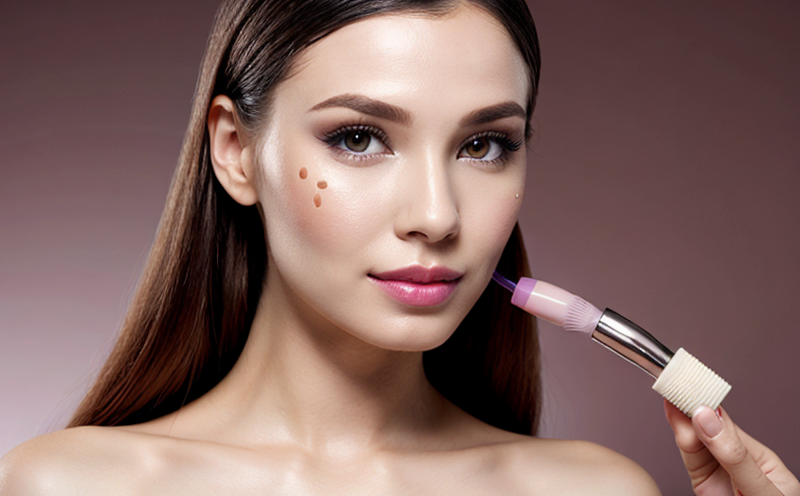In Vitro Micronucleus Assay for Cosmetic Safety
The In Vitro Micronucleus (MN) Assay is a pivotal tool in cosmetic safety testing. It evaluates potential genotoxicity by detecting the formation of micronuclei, which are small, abnormal nuclei formed when chromosomes fail to enter the main nucleus during cell division. This assay aligns with international standards such as ISO 10993-18 and OECD Guidelines for Testing of Chemicals.
The assay is particularly valuable in cosmetic safety testing because it provides a reliable method to assess genotoxicity without the ethical concerns associated with animal testing. By using human cell lines, this approach ensures that the results are more relevant to potential human health impacts. The assay focuses on three main stages: sample preparation, assay performance, and result interpretation.
Sample preparation involves selecting appropriate human keratinocyte cells (HaCaT) or other relevant cell types for the study. These cells are then exposed to cosmetic formulations under controlled conditions. The exposure duration can vary based on the specific formulation and its expected use. After exposure, cells undergo fixation and staining using fluorescent dyes like propidium iodide.
The assay performance involves a series of steps aimed at detecting micronuclei formation accurately. This includes culturing the cells in appropriate media, applying the test substance for the specified time, fixing the cells with methanol-acetic acid solution, and staining them with propidium iodide to visualize chromosomal abnormalities. The final step is scoring the cells under a fluorescence microscope.
Result interpretation involves calculating the percentage of micronucleated cells relative to total cell numbers in each treatment group compared to control groups. A statistically significant increase in micronuclei formation suggests potential genotoxicity, indicating that further investigation into the formulation's safety profile may be necessary.
The use of this assay not only contributes significantly to reducing animal testing but also enhances product safety by identifying potential risks early in the development process. This ensures that cosmetic products meet stringent regulatory requirements and consumer expectations for quality and safety.
| Stage | Description |
|---|---|
| Sample Preparation | Selecting human keratinocyte cells, preparing the exposure media, and applying test substances to these cells. |
| Assay Performance | Culturing cells, exposing them to test substances, fixing and staining with propidium iodide, and scoring under a microscope. |
| Result Interpretation | Calculating the percentage of micronucleated cells relative to total cell numbers in each group. |
The In Vitro MN Assay is widely accepted by regulatory bodies and international organizations, making it a preferred method for cosmetic safety testing. Its non-invasive nature and high reliability make it an essential tool in the industry's shift towards more humane and effective testing methods.
Environmental and Sustainability Contributions
The use of In Vitro Micronucleus Assay for cosmetic safety testing contributes significantly to environmental sustainability by reducing the reliance on animal testing. By eliminating the need for live animal models, this method helps minimize the ethical concerns associated with such practices.
- Reduces demand for animals in testing
- Promotes more humane testing methods
- Supports regulatory compliance without harming wildlife
The assay’s precision and reliability also reduce the need for multiple trials, thereby minimizing resource consumption. The use of human cell lines ensures that the results are highly relevant to potential human health impacts, leading to safer products.
Competitive Advantage and Market Impact
Adopting In Vitro Micronucleus Assay for cosmetic safety testing provides a competitive edge in several ways:
- Enhanced Product Safety: Ensures that products meet strict regulatory standards, enhancing consumer trust.
- Faster Market Entry: Shortened assay timelines mean quicker product development cycles and faster market launches.
- Innovation Support: Allows for the early detection of potential risks, enabling companies to innovate confidently without compromising safety.
This method not only improves brand reputation but also increases market competitiveness by offering safer products that align with global trends towards more responsible and ethical testing practices.
Use Cases and Application Examples
- New Product Development: Identifying potential genotoxic risks early in the development process.
- Formulation Modification: Assessing the impact of changes to existing formulations on safety.
- Compliance Assurance: Ensuring that cosmetic products meet regulatory requirements for safe use.
| Use Case | Description |
|---|---|
| New Product Development | Evaluating the safety of new cosmetic formulations before market release. |
| Formulation Modification | Assessing changes made to existing products for potential genotoxic effects. |
| Compliance Assurance | Ensuring that all products comply with international safety standards. |
In conclusion, the In Vitro Micronucleus Assay plays a crucial role in ensuring cosmetic product safety through its precise and reliable detection of genotoxic effects. By integrating this method into their testing protocols, companies can enhance their competitive positioning while contributing to environmental sustainability.





